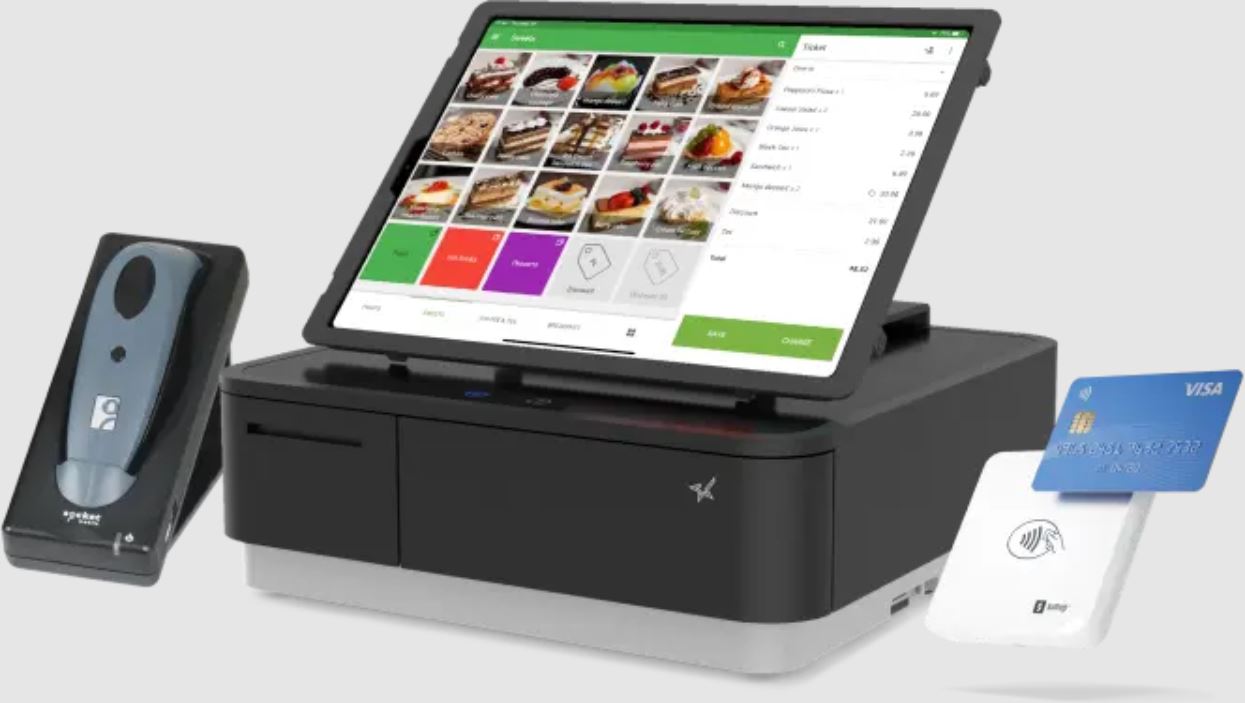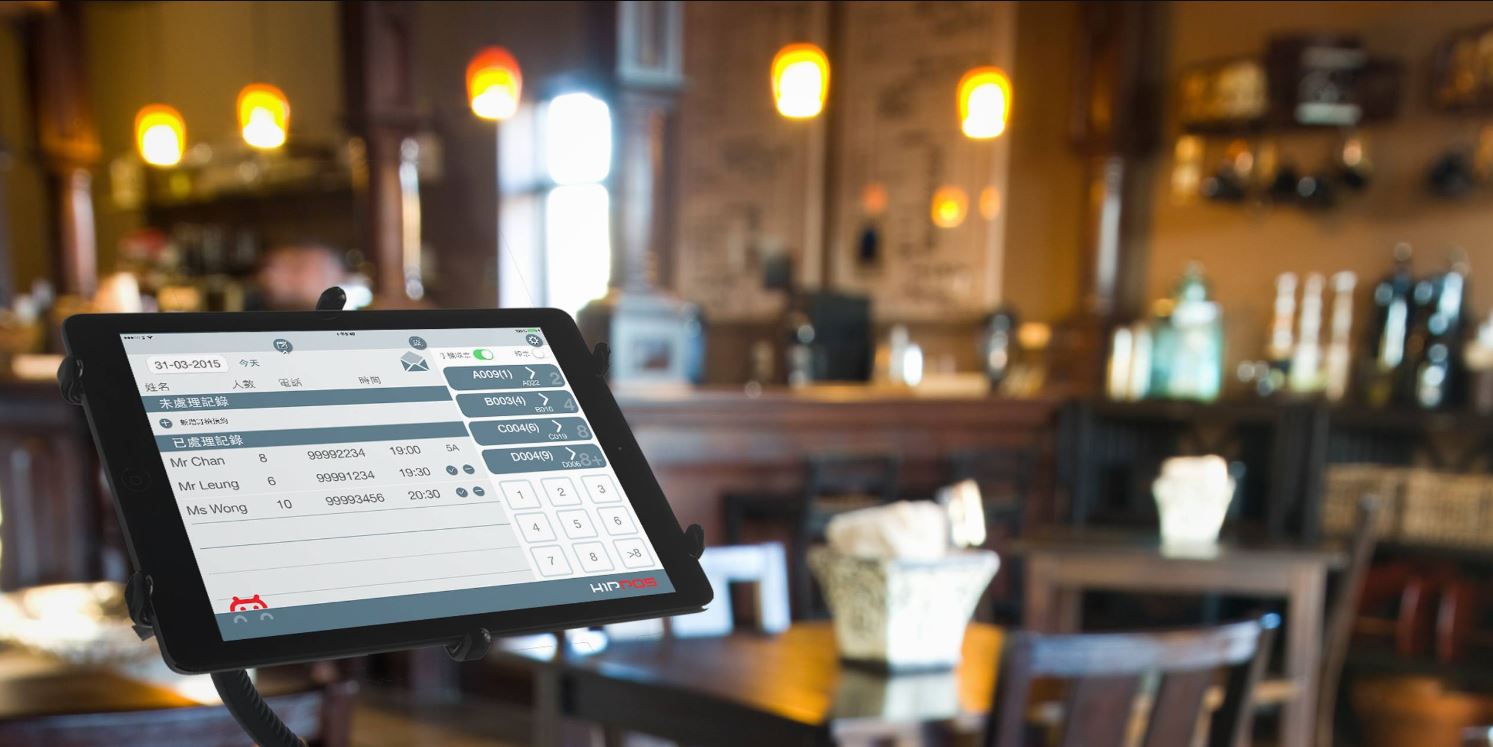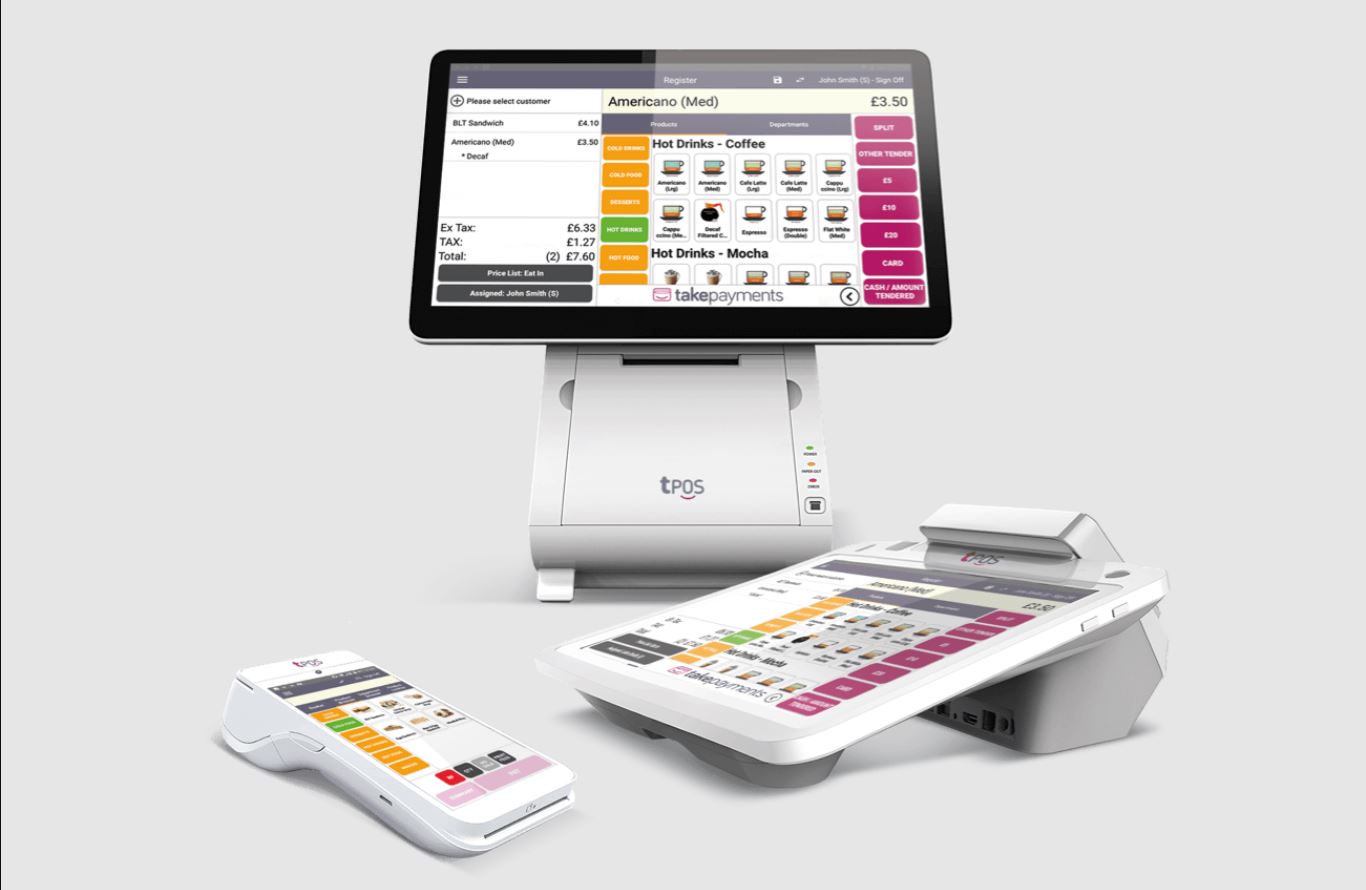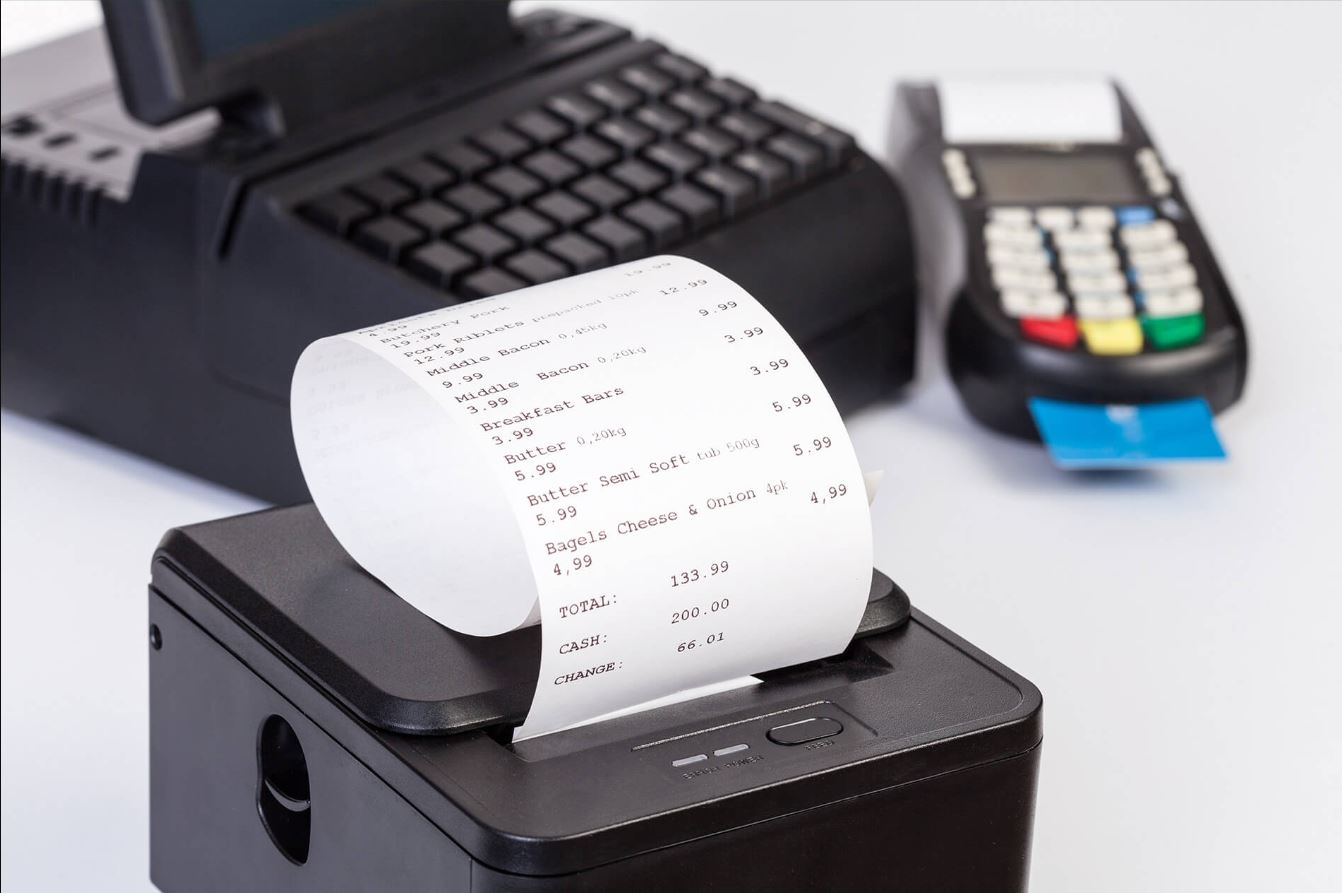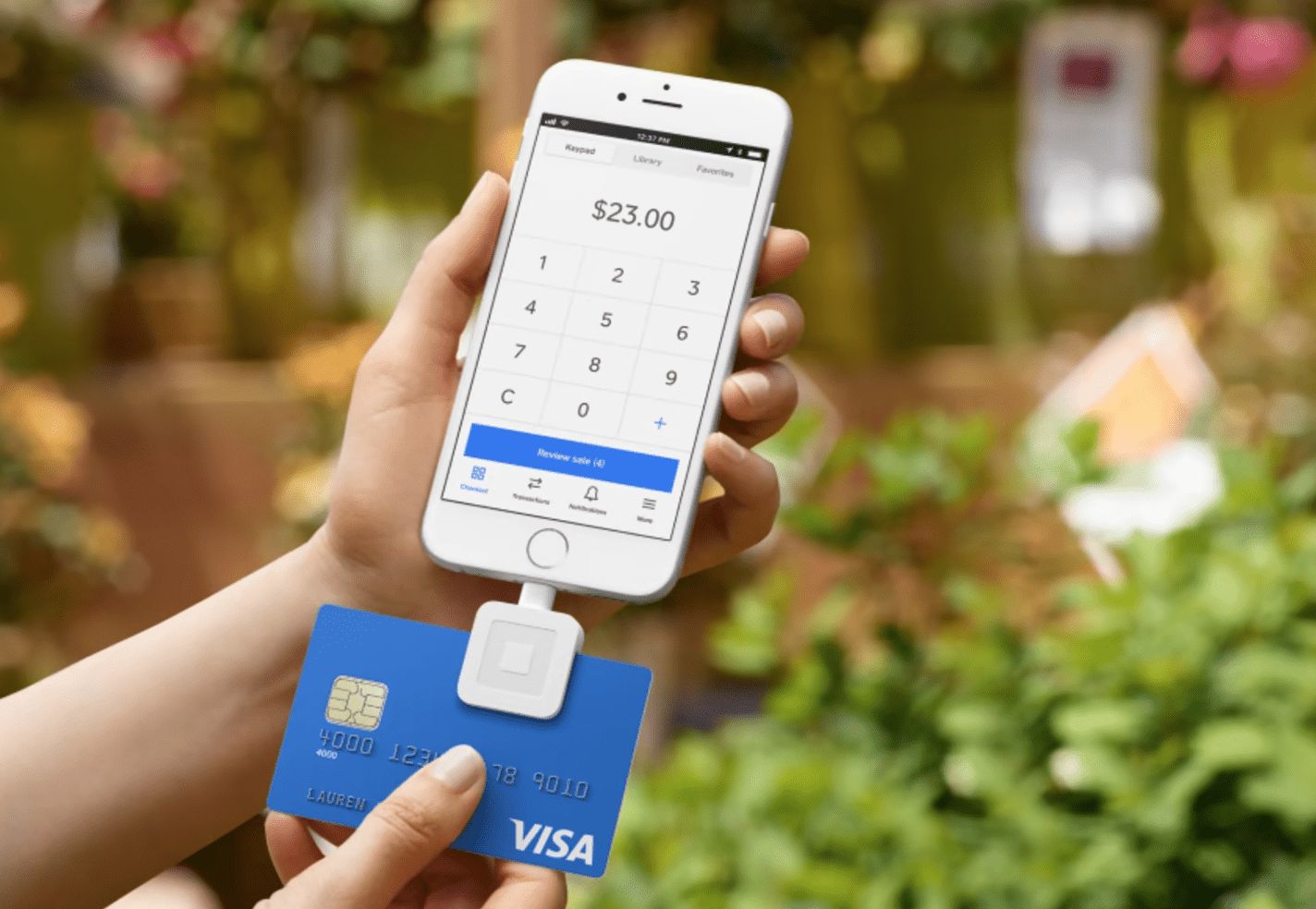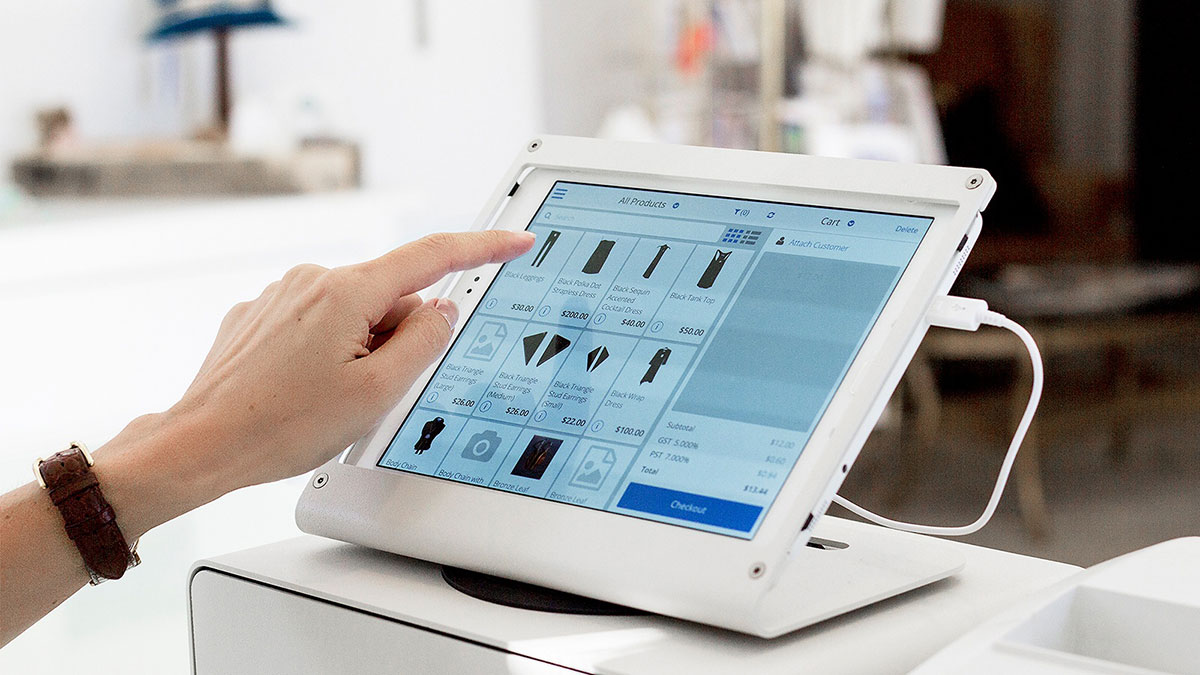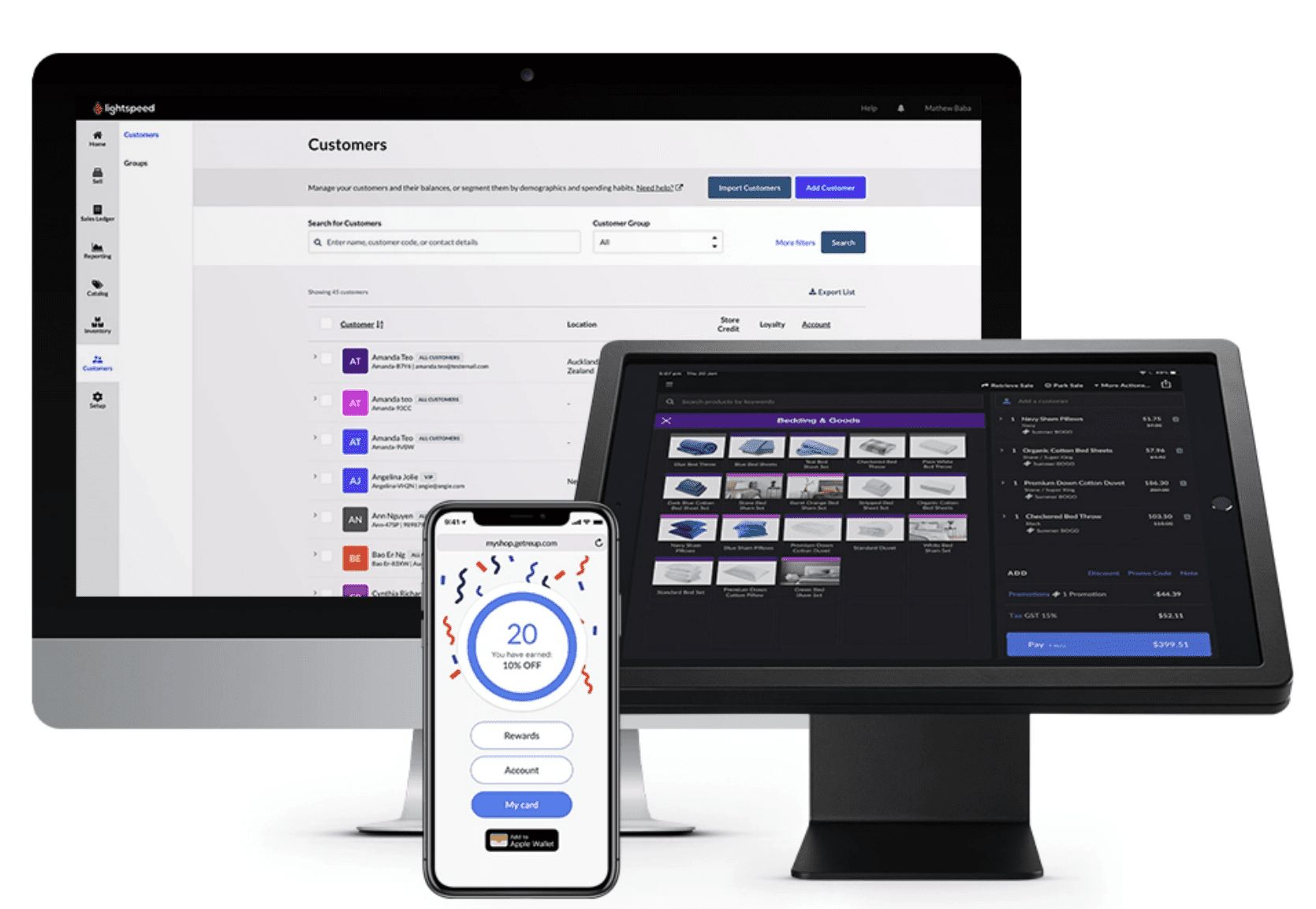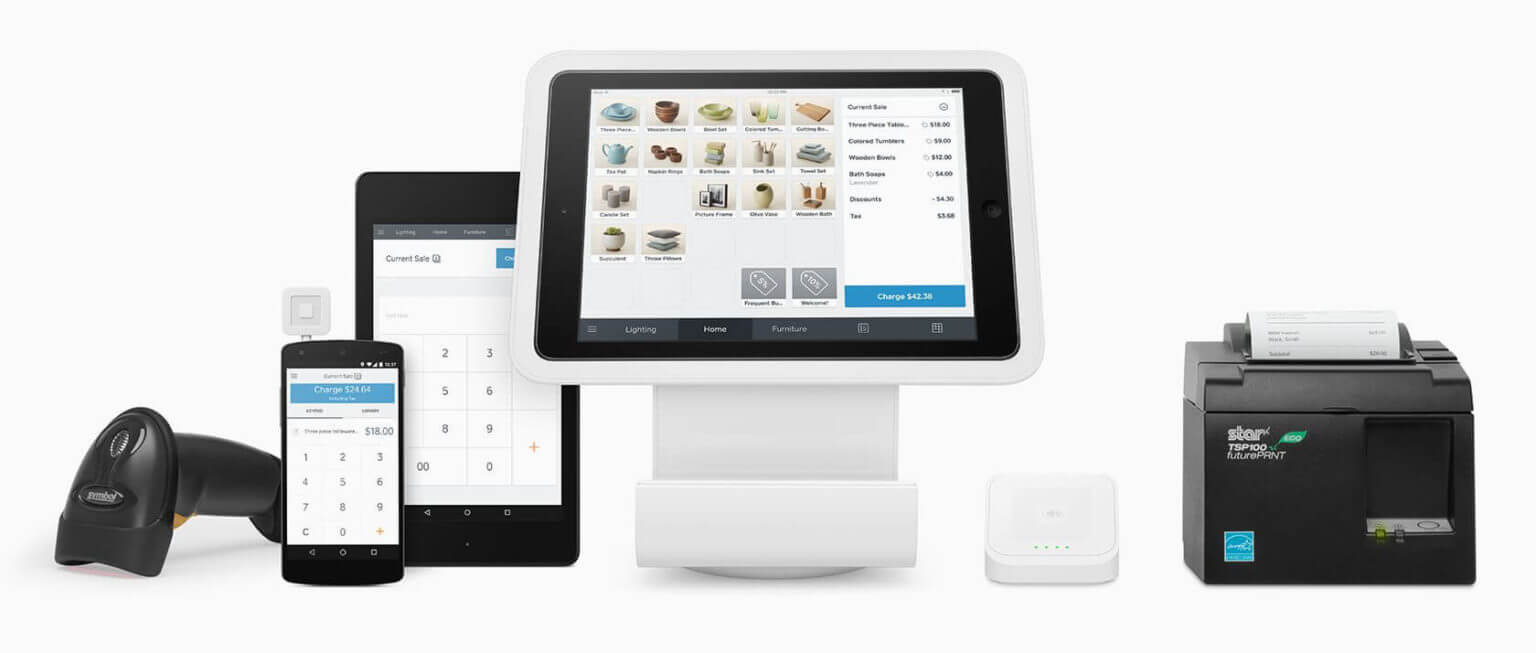Reasons to Choose a POS System
Choosing a point of sale (POS) system can greatly benefit your business in numerous ways. Whether you run a small retail store, a bustling restaurant, or an online business, implementing a POS system can streamline your operations and drive growth. Here are several reasons why you should consider choosing a POS system:
- Efficient Checkout Process: A POS system automates the checkout process, making it quick and seamless for your customers. With features like barcode scanning, digital receipts, and integrated payment processing, transactions are completed in a fraction of the time, reducing long queues and ensuring customer satisfaction.
- Inventory Management: Keeping track of inventory manually can be time-consuming and prone to errors. With a POS system, you can effortlessly manage your inventory, track stock levels, set up automated reorder points, and even generate detailed reports on sales and inventory statistics. This helps you avoid stockouts, optimize your product offerings, and improve overall efficiency.
- Accurate Sales Reports: A POS system provides real-time sales data and comprehensive reports that give you valuable insights into your business performance. You can analyze sales trends, identify top-selling products, monitor employee performance, and make informed business decisions based on accurate and up-to-date information.
- Customer Relationship Management: A POS system enables you to create and maintain a database of customer information. You can track customer preferences, purchase history, and contact details to personalize your marketing efforts, offer targeted promotions, and enhance the overall customer experience. This leads to improved customer satisfaction, increased loyalty, and higher conversion rates.
- Streamlined Accounting: Integrating your POS system with your accounting software eliminates the need for manual data entry and reduces the likelihood of errors. Sales data, inventory updates, and financial transactions are automatically synced, saving you time and ensuring accurate financial records for tax purposes and financial planning.
- Enhanced Security: POS systems employ advanced security measures to protect sensitive customer data and guard against fraudulent activities. With features like encrypted transactions, multi-factor authentication, and secure payment processing, you can rest assured that your business and your customers’ information are well-protected.
These are just a few compelling reasons why choosing a POS system can greatly benefit your business. By streamlining processes, improving efficiency, and enhancing customer experiences, a POS system becomes an invaluable tool for growth and success.
Factors to Consider When Choosing a POS System
When selecting a point of sale (POS) system for your business, it’s crucial to consider several key factors to ensure that you choose the right solution. Here are some important factors to keep in mind:
- Business Needs: Start by assessing your specific business needs. Determine the industry you operate in, the type and size of your business, and the specific functionalities you require. This will help you narrow down your options and find a POS system that aligns with your unique requirements.
- Scalability: Consider the scalability of the POS system. Will it be able to grow alongside your business? Look for a solution that can handle an increasing volume of sales, accommodate additional locations or channels, and support your future expansion plans.
- Compatibility: Ensure that the POS system you choose is compatible with your existing hardware and software. Verify that it integrates seamlessly with your payment processors, accounting software, e-commerce platforms, and any other essential tools you use in your business. This will prevent compatibility issues and eliminate the need for manual data entry and duplicate efforts.
- User-Friendliness: A user-friendly POS system is essential, especially if you have multiple employees who will be using it. Look for intuitive interfaces, straightforward navigation, and easy-to-use features. A system that is simple to learn and operate will save you time on training and minimize potential errors during busy periods.
- Mobile Capability: In the age of mobile technology, having a POS system with mobile capabilities can offer flexibility and convenience. Look for a solution that supports mobile devices, allowing you to make sales and manage your business from anywhere, whether it’s a trade show, a pop-up store, or even your customers’ homes.
- Cost and Pricing Structures: Consider your budget and evaluate the cost and pricing structures of different POS systems. Look for transparent pricing, including hardware costs, software fees, transaction fees, and any additional charges. Also, inquire about any ongoing maintenance or upgrade costs to ensure that the system is affordable and offers long-term value.
- Customer Support: Choose a POS system provider that offers reliable customer support. Evaluate the available support channels, such as phone, email, or live chat, and inquire about their response times and availability. A responsive support team can help you quickly resolve any issues and minimize downtime.
- Security Measures: Security should be a top priority when choosing a POS system. Ensure that the system incorporates robust security features, such as data encryption, PCI compliance, and user authentication. Protecting your customers’ sensitive information and safeguarding your business from cyber threats is essential.
By considering these factors and selecting a POS system that meets your business needs, offers scalability and compatibility, provides an intuitive user experience, and prioritizes security and support, you can make an informed decision that will help optimize your operations and drive your business forward.
Types of POS Systems
Point of sale (POS) systems come in various types, each designed to cater to specific business needs and industries. Understanding the different types can help you choose the most appropriate system for your business. Here are some common types of POS systems:
- Retail POS Systems: Designed for traditional brick-and-mortar retailers, these systems focus on sales transactions, inventory management, and customer relationship management (CRM). They typically include features like barcode scanning, receipt printing, and integration with cash registers and card payment terminals.
- Restaurant POS Systems: Specifically tailored for the food service industry, restaurant POS systems streamline order taking, table management, kitchen communication, and payment processing. They often feature customized menu layouts, table mapping, split billing, and integration with kitchen printers and online ordering platforms.
- Mobile POS Systems: These systems leverage mobile technology, such as tablets or smartphones, to process sales transactions and manage inventory on the go. Mobile POS systems are ideal for pop-up shops, trade shows, food trucks, and businesses that require mobility and flexibility.
- E-commerce POS Systems: Designed for online businesses, e-commerce POS systems integrate with your website or online store, allowing you to manage inventory, process online orders, and track sales. These systems often come with features like integration with popular e-commerce platforms, automated order fulfillment, and real-time inventory updates.
- Hospitality POS Systems: Aimed at hotels, resorts, and other hospitality establishments, these systems offer comprehensive functionality to manage room bookings, guest services, event management, and point-of-sale operations. They often integrate with property management systems (PMS) and include features like room rate management and guest check-in/out.
- Self-Service Kiosk POS Systems: These systems allow customers to place orders and make payments independently using interactive kiosks. Commonly found in fast-food restaurants, cinemas, and airports, self-service kiosk POS systems enhance efficiency, reduce wait times, and provide a modern and convenient customer experience.
It’s important to note that some POS systems can serve multiple types of businesses, while others are specifically designed for a particular industry. When choosing a POS system, consider your business type and the specific functionalities you require to ensure that you select the most suitable type of POS system for your needs.
Features to Look for in a POS System
When evaluating different point of sale (POS) systems for your business, it’s essential to identify the key features that will best support your operations. Here are some important features to look for when choosing a POS system:
- Sales and Payment Processing: A robust POS system should have seamless and secure sales and payment processing capabilities. Look for features like barcode scanning, customizable pricing options, split payments, and integration with various payment methods such as credit cards, mobile wallets, and gift cards.
- Inventory Management: Efficient inventory management is crucial for business success. Your chosen POS system should offer features like real-time inventory tracking, automated stock level alerts, purchase order management, and the ability to generate comprehensive reports on stock levels, product performance, and reordering needs.
- Customer Relationship Management (CRM): A good POS system should have CRM features to help you build and maintain strong customer relationships. Look for capabilities like customer profiles, purchase history tracking, loyalty program integration, and targeted marketing functionalities, such as email marketing and personalized promotions.
- Reporting and Analytics: Advanced reporting and analytics capabilities provide valuable insights into your business performance. Look for a POS system that offers comprehensive reporting features, including sales reports, inventory reports, employee performance reports, and custom report creation options. This data-driven approach enables you to make informed decisions and identify areas for improvement.
- Multi-Location Management: If you have multiple business locations, consider a POS system with multi-location management capabilities. This feature allows you to monitor and manage inventory levels, transfer stock between locations, and access consolidated sales data across all locations, providing centralized control and streamlining operations.
- Integration with External Systems: Ensure that the POS system you choose can integrate with other essential business tools and software. Look for integrations with accounting software, e-commerce platforms, customer relationship management (CRM) systems, and any other systems you use to promote seamless data flow and eliminate manual data entry.
- Employee Management: Look for a POS system that offers employee management features, such as individual login credentials, access controls, time clock functionality, and performance tracking. These features help you manage employee workflows, track sales performance, and streamline payroll processes.
- Ease of Use: User-friendliness is crucial for any POS system. Look for an intuitive interface, easy navigation, and straightforward setup processes. A user-friendly system reduces training time, minimizes errors during transactions, and ensures smooth day-to-day operations.
- Customer Support: Reliable and responsive customer support is essential when it comes to POS systems. Look for a provider that offers different support channels, including phone, email, and live chat. Prompt and knowledgeable customer support can assist you in resolving issues quickly and minimizing downtime.
By considering these key features and selecting a POS system that aligns with your business requirements, you can optimize your operations, enhance customer experiences, and position your business for success.
Integrations and Compatibility
When choosing a point of sale (POS) system for your business, it’s important to consider the integrations and compatibility of the system with other essential tools and software that you use. Here are some key factors to consider:
- Payment Processors: Ensure that the POS system you choose integrates seamlessly with your preferred payment processors. Compatibility with major payment gateways and merchant services providers will allow you to process various types of payments, such as credit cards, debit cards, mobile wallets, and more.
- Accounting Software: If you use accounting software to manage your business finances, it is crucial to select a POS system that can integrate with your chosen accounting software. This integration will enable seamless synchronization of sales data, expenses, and financial transactions, eliminating the need for manual data entry.
- E-commerce Platforms: If you operate an online store, make sure the chosen POS system is compatible with your e-commerce platform. This compatibility will enable you to synchronize inventory levels, track sales across different channels, and provide a unified customer experience online and offline.
- Customer Relationship Management (CRM) Systems: If you employ a CRM system to manage customer data and relationships, ensure that the POS system integrates with your CRM software. This integration will allow you to access customer information, purchasing history, and other data to personalize marketing efforts and provide exceptional customer experiences.
- Inventory Management Tools: If you use specialized inventory management software, select a POS system that integrates with these tools. This integration will enable you to have accurate and up-to-date inventory data, synchronize stock levels, streamline purchasing and receiving, and manage replenishments efficiently.
- Third-Party Apps and Add-Ons: Consider any additional third-party apps or add-ons that you currently use or plan to use in your business. Verify if the POS system supports these third-party integrations to extend the functionalities and capabilities of your system, such as loyalty programs, email marketing tools, employee scheduling software, or delivery services.
- Hardware Compatibility: Ensure that the POS system you choose is compatible with the hardware you already have or plan to use. Check if the system supports various devices such as tablets, cash registers, receipt printers, barcode scanners, and card payment terminals. Compatibility with your existing hardware will save you from unnecessary expenses.
- Scalability and Future Needs: Consider your future growth plans and the potential need for additional integrations. While your current requirements might be met, it’s important to choose a POS system that offers the flexibility to integrate with new tools and software as your business evolves and expands.
By selecting a POS system that integrates seamlessly with your existing tools and software, you can centralize data management, reduce manual work, and improve overall efficiency in your business operations.
Pricing and Cost Analysis
When selecting a point of sale (POS) system for your business, it’s important to consider the pricing structure and conduct a thorough cost analysis to ensure that the system is affordable and provides long-term value. Here are some key factors to consider:
- Hardware Costs: Determine if the POS system requires any specific hardware components, such as tablets, cash registers, printers, or scanners. Consider the upfront costs associated with purchasing or leasing this hardware and evaluate if it aligns with your budget.
- Software Fees: Determine if the POS system has any software licensing or subscription fees. Consider whether the pricing model is based on a one-time payment, monthly subscription, or annual renewal, and evaluate if the pricing structure is sustainable for your business.
- Transaction Fees: Inquire about any transaction fees associated with processing payments through the POS system. Assess whether the fee structure is reasonable based on your average transaction volume and consider if there are any volume-based discounts available.
- Add-Ons and Integrations: Some POS systems may offer additional features or integrations as separate add-ons with corresponding costs. Determine if any desired add-ons or integrations are essential for your business operations and evaluate if the associated costs fit within your budget.
- Ongoing Maintenance and Support: Consider if the POS system provider charges for ongoing maintenance, updates, or technical support. Evaluate the cost of these services and assess the level of support offered to ensure it meets your business needs.
- Upgrade Costs: Determine if there are any costs associated with upgrading the POS system in the future. Consider if the provider offers regular software updates and assess the frequency and cost of these updates to ensure they align with your long-term business plans.
- Training and Onboarding: Inquire about any training or onboarding fees associated with implementing the POS system. Evaluate the level of training and support offered, and assess if it is sufficient for you and your team to quickly adopt and utilize the system effectively.
- Total Cost of Ownership: Conduct a thorough cost analysis by considering the hardware costs, software fees, transaction fees, add-ons, maintenance, support, and training. Compare the total cost of ownership for different POS systems and determine which one offers the best value for your business.
- Scalability and ROI: Consider the long-term scalability and return on investment (ROI) of the POS system. Evaluate if the system can accommodate your future growth and expansion plans and assess the potential positive impact on your business bottom line.
By conducting a comprehensive pricing and cost analysis, you can ensure that the selected POS system is within your budget, provides long-term value, and aligns with your business goals and growth plans.
User-Friendliness and Training
When choosing a point of sale (POS) system for your business, it’s crucial to consider the user-friendliness of the system and the training options provided to ensure a smooth transition and optimal usage. Here are some key factors to consider:
- Intuitive Interface: Look for a POS system with an intuitive user interface that is easy to navigate. A clean and user-friendly layout reduces the learning curve and makes it easier for you and your employees to quickly understand and operate the system.
- Ease of Use: Consider the ease of use of the POS system. Features like one-click actions, drag-and-drop functionality, and clear instructions can simplify the transaction process and reduce the likelihood of errors during busy periods.
- Setup and Installation: Evaluate the setup and installation process of the POS system. Look for a system that offers straightforward setup instructions or provides assistance to ensure that the system is up and running quickly and smoothly.
- Training Options: Inquire about the training options offered by the POS system provider. Look for providers that offer comprehensive training programs, including online tutorials, video demonstrations, user manuals, and dedicated customer support to help you and your team get acquainted with the system.
- Customization: Consider the level of customization available with the POS system. The ability to tailor the system to your specific business needs, such as adding custom buttons or setting up specific workflows, can enhance usability and efficiency.
- Compatibility with Existing Knowledge: Evaluate how well the POS system aligns with the existing knowledge and skills of your employees. If your team is already familiar with a specific POS interface or terminology, choosing a system with similar elements can simplify the transition and minimize the learning curve.
- Onboarding Support: Determine if the POS system provider offers onboarding support or assistance. Look for providers that offer personalized onboarding sessions, dedicated account managers, or the option to contact customer support for guidance during the initial implementation process.
- Customer Support: Consider the availability and responsiveness of customer support provided by the POS system provider. Look for providers that offer multiple support channels, such as phone, email, or live chat, and ensure that their support team has a reputation for being knowledgeable and responsive.
- Scalability: Assess whether the POS system can scale with your business growth. Consider if the provider offers additional training resources or support as your business expands, ensuring that your team can adapt to new functionalities and features as needed.
By selecting a user-friendly POS system and ensuring that an adequate training and support framework is in place, you can empower your team to effectively utilize the system, maximize productivity, and provide seamless service to your customers.
Customer Support and Service
When choosing a point of sale (POS) system for your business, it’s crucial to consider the level of customer support and service provided by the POS system provider. Here are some key factors to consider:
- Availability: Evaluate the availability of customer support. Look for a provider that offers support during your business hours or has 24/7 support to ensure that assistance is readily available when you need it.
- Response Time: Inquire about the average response time of the customer support team. A prompt response to your queries or issues can minimize downtime and keep your business operations running smoothly.
- Communication Channels: Consider the communication channels offered by the POS system provider for customer support. Look for providers that offer multiple channels such as phone, email, live chat, or a support ticket system to ensure that you can reach out through your preferred method.
- Knowledge and Expertise: Assess the knowledge and expertise of the customer support team. Look for providers who have a reputation for having a knowledgeable support staff capable of understanding and resolving technical issues related to the POS system.
- Training and Onboarding Support: Determine if the provider offers training and onboarding support. Look for resources such as training videos, tutorials, user manuals, or dedicated onboarding sessions to help you and your team get acquainted with the POS system.
- Online Knowledge Base: Check if the POS system provider has an online knowledge base or a comprehensive FAQ section. These resources can provide valuable information, troubleshooting tips, and step-by-step guides for common issues that you or your employees might encounter.
- Escalation Process: Inquire about the escalation process in case of critical issues that require immediate attention. Ensure that there is a defined process to escalate urgent matters to a higher level of support, such as a dedicated account manager or technical specialist.
- Customer Reviews and References: Research customer reviews and testimonies about the customer support and service provided by the POS system provider. Positive reviews and references from other businesses can provide insights into the provider’s commitment to customer satisfaction.
- Upgrades and Maintenance: Inquire about the process and support provided for system upgrades and ongoing maintenance. Look for providers that offer regular updates, bug fixes, and security patches to keep your POS system running smoothly and protect against potential vulnerabilities.
- Feedback and Continuous Improvement: Consider if the POS system provider values and acts upon customer feedback. Providers that actively seek feedback and make improvements based on customer suggestions demonstrate their commitment to delivering an optimal customer experience.
By selecting a POS system provider that offers reliable and responsive customer support, you can have peace of mind knowing that assistance is available when you need it and that any issues or concerns will be addressed in a timely and efficient manner.
Security and Data Protection
When selecting a point of sale (POS) system for your business, ensuring the security and protection of sensitive customer data is of utmost importance. Here are some key factors to consider:
- Data Encryption: Verify if the POS system utilizes data encryption to protect sensitive information during transmission and storage. Encryption provides an additional layer of security by encoding data so that it is unreadable to unauthorized users.
- Payment Card Industry (PCI) Compliance: Check if the POS system is Payment Card Industry Data Security Standard (PCI DSS) compliant. PCI compliance ensures that the system meets stringent security standards for handling payment card information and reduces the risk of cardholder data breaches.
- User Authentication: Determine if the POS system offers user authentication features such as individual login credentials and access controls. User authentication minimizes the risk of unauthorized access and ensures that only authorized personnel can access sensitive functions and data.
- Data Backup and Recovery: Inquire about the backup and recovery processes that the POS system provider has in place. Regularly backing up data and having a robust recovery plan in case of data loss or system failure helps safeguard your business information.
- Secure Payment Processing: Evaluate the security measures in place for payment processing. Look for POS systems that offer secure payment gateways and industry-standard protocols to protect customer payment information during transactions.
- Internal Controls: Assess the internal controls and user permissions offered by the POS system. Features like role-based access control and activity logs allow you to monitor and manage user actions, reducing the risk of unauthorized activities or fraudulent behavior.
- Regular Updates and Patching: Verify if the POS system provider regularly releases updates and security patches to address vulnerabilities and improve system security. Regular updates ensure that your POS system remains protected against emerging threats.
- Physical Security Measures: Consider the physical security measures implemented by the POS system provider. Look for systems that provide secure hardware components and take measures to prevent tampering or unauthorized access to the system, such as locking mechanisms or biometric authentication.
- Compliance with Data Regulations: Ensure that the POS system provider complies with applicable data privacy and protection regulations, such as the General Data Protection Regulation (GDPR) or local data protection laws. Compliance with these regulations ensures that your business adheres to legal requirements regarding data privacy and protection.
- Third-Party Integrations: If the POS system integrates with third-party apps or services, consider the security measures in place for those integrations. Verify that the data shared between the POS system and the third-party apps or services is protected and handled securely.
By selecting a POS system that prioritizes security and data protection, you can ensure the confidentiality, integrity, and availability of sensitive customer data, and mitigate the risk of data breaches or unauthorized access.
Case Studies: Success Stories of Businesses Implementing POS Systems
Implementing a point of sale (POS) system can have a significant positive impact on businesses across various industries. Here are a few case studies highlighting the success stories of businesses that have implemented POS systems:
Case Study 1: Retail Store
A small retail store implemented a cloud-based POS system, offering features like inventory management, sales reporting, and customer management. By using the POS system, the store was able to streamline their inventory processes, ensuring accurate stock levels and reducing instances of stockouts. This improvement resulted in increased customer satisfaction, as popular items were consistently available. Additionally, the sales reporting capabilities of the POS system provided valuable insights into sales trends and customer preferences, enabling the store to make data-driven business decisions, optimize product offerings, and improve overall profitability.
Case Study 2: Restaurant
A busy restaurant integrated a POS system specifically designed for the food service industry. The system facilitated efficient order taking, improved table management, and simplified payment processing. By implementing the POS system, the restaurant experienced faster order processing, reduced order errors, and improved communication between the front-of-house and kitchen staff. This resulted in improved customer experiences, higher table turnover rates, and increased overall revenue. Additionally, the POS system’s reporting and analytics features allowed the restaurant to analyze sales data, identify popular menu items, and optimize their menu offerings to drive customer satisfaction and profitability.
Case Study 3: E-commerce Business
An online retailer implemented an integrated POS system that synchronized with their e-commerce platform. This integration allowed the business to have real-time inventory updates across their online and offline channels, enabling them to fulfill orders more accurately and efficiently. The POS system also provided centralized order management, streamlined payment processing, and enhanced customer relationship management. As a result, the retailer experienced improved operational efficiency, reduced manual errors, and increased customer retention rates. The integrated POS system allowed for seamless customer experiences, consistent inventory management, and ultimately led to higher customer satisfaction and repeat purchases.
Case Study 4: Hospitality Establishment
A hotel implemented a comprehensive POS system that encompassed front desk operations, room bookings, and food and beverage services. The system integrated with their property management system, facilitated efficient check-in and check-out processes, and provided detailed reporting on room occupancy rates and revenue. By using the POS system, the hotel optimized their guest services and streamlined their operations, resulting in improved guest experiences and increased operational efficiency. The integrated POS system also allowed for accurate billing, seamless communication between departments, and enhanced revenue management.
These case studies demonstrate the significant benefits that businesses across different industries have achieved through the implementation of POS systems. By streamlining processes, improving efficiency, and enhancing customer experiences, businesses can optimize their operations, drive growth, and ultimately achieve greater success.
Conclusion
Choosing the right point of sale (POS) system is a critical decision that can significantly impact the success of your business. By considering the factors discussed in this article, such as the reasons to choose a POS system, the factors to consider, the types of POS systems, and the features to look for, you can make an informed decision that aligns with your business goals and needs.
A POS system offers numerous benefits, including an efficient checkout process, streamlined inventory management, accurate sales reporting, enhanced customer relationship management, and streamlined accounting. These features enable you to optimize your operations, improve customer satisfaction, and drive growth.
When selecting a POS system, consider its integrations and compatibility with other essential tools and software that you use. This ensures seamless data flow and simplifies your business processes. Additionally, evaluate the pricing structure and conduct a thorough cost analysis to ensure that the system fits within your budget and provides long-term value.
Usability and user-friendliness are key considerations when choosing a POS system. Look for a system with an intuitive interface, easy navigation, and comprehensive training options to ensure a smooth transition and optimal usage by you and your team.
Customer support and service, as well as security and data protection, are crucial factors to consider. A POS system provider that offers reliable and responsive customer support, along with robust security measures, ensures that your business operations run smoothly and that your sensitive data remains protected.
By analyzing case studies of successful businesses that have implemented POS systems, you can gain valuable insights into the benefits and positive impacts that such systems can bring to different industries and operational aspects.
In conclusion, selecting the right POS system is a strategic investment that can help optimize your operations, improve efficiencies, enhance customer experiences, and drive overall business growth. By carefully evaluating your needs, considering the available options, and choosing a system that aligns with your requirements, you can position your business for success in today’s dynamic and competitive marketplace.









